Six scientists at Lawrence Berkeley National Laboratory (Berkeley Lab) have been selected by the U.S. Department of Energy’s (DOE’s) Office of Science to receive significant funding for research through its Early Career Research Program.
The program, now in its ninth year, is designed to bolster the nation’s scientific workforce by providing support to exceptional researchers during the crucial early career years, when many scientists do their most formative work. The six Berkeley Lab recipients are among a total of 84 recipients selected this year, including 30 from DOE’s national laboratories. This year’s awards bring to 35 the total number of Berkeley Lab scientists who have received Early Career Research Program awards since 2010.
“We are grateful that DOE has chosen to recognize these six young Berkeley Lab scientists,” said Berkeley Lab Director Mike Witherell. “Our Lab takes very seriously the responsibility to train the next generation of scientists and engineers. Each of their proposed projects not only represents cutting-edge science but will also contribute to our understanding of the world and a sustainable future.“
The scientists are each expected to receive grants of up to $2.5 million over five years to cover year-round salary plus research expenses.
This year’s Berkeley Lab awardees and their projects and nominating program offices are listed below.
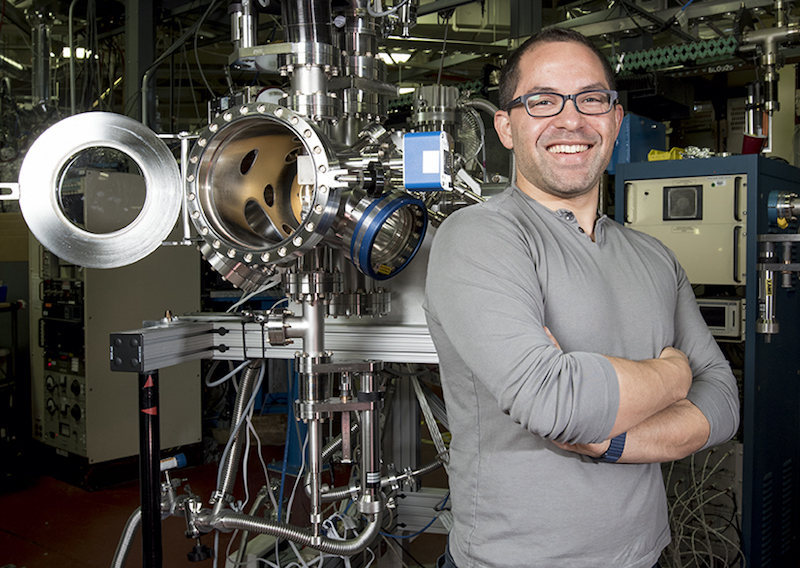 Ethan Crumlin is a staff scientist at the Advanced Light Source (ALS), a DOE Office of Science User Facility at Berkeley Lab, who specializes in studies of chemistry at the interfaces between solids, liquids, and gases. His award is for “Discovering the Mechanisms and Properties of Electrochemical Reactions at Solid/Liquid Interfaces.” Crumlin’s proposal was managed through the Chemical Sciences Division, and the award was selected by the DOE Office of Basic Energy Sciences.
Ethan Crumlin is a staff scientist at the Advanced Light Source (ALS), a DOE Office of Science User Facility at Berkeley Lab, who specializes in studies of chemistry at the interfaces between solids, liquids, and gases. His award is for “Discovering the Mechanisms and Properties of Electrochemical Reactions at Solid/Liquid Interfaces.” Crumlin’s proposal was managed through the Chemical Sciences Division, and the award was selected by the DOE Office of Basic Energy Sciences.
His project will combine experimental techniques – including a specialized technique at the ALS known as ambient-pressure X-ray photoelectron spectroscopy (APXPS) – as well as modeling and computation, to study what’s at work in battery and fuel cells at electrified interfaces under operating conditions, for example. The project could empower innovations in materials and devices, and could also lend new insights in fields ranging from geology to biology.
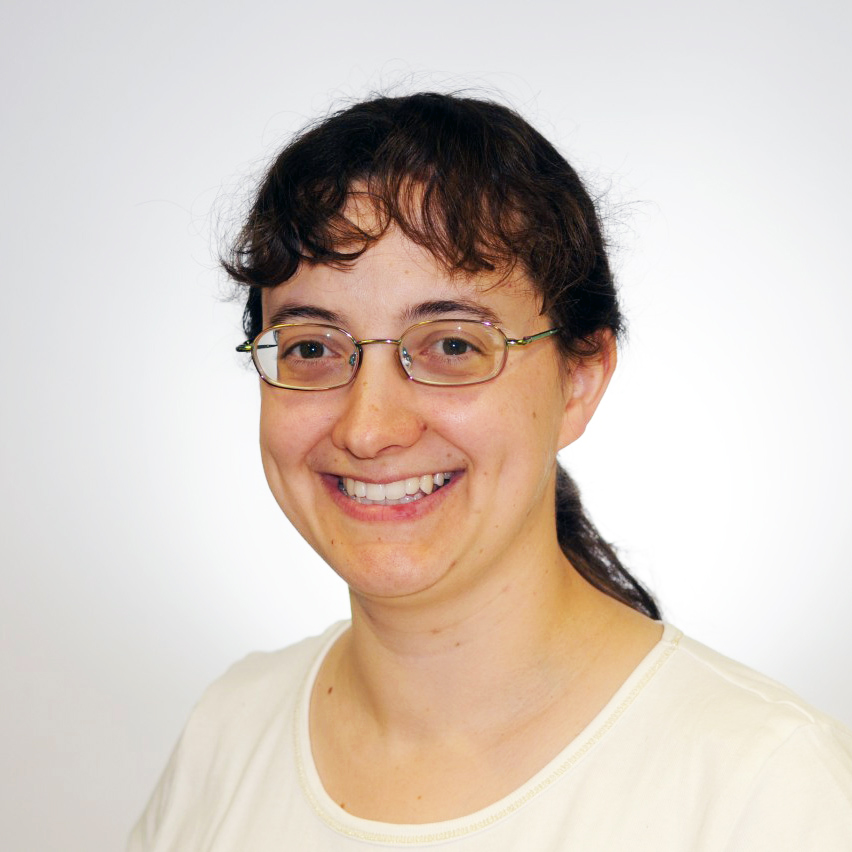 Karen Davies is a staff scientist in the Molecular Biophysics and Integrated Bioimaging Division focused on protein structure and bioenergetics, which includes the study of the flow of energy in living organisms. Her award is for “Structure of the Cyanobacterial NAD(P)H Dehydrogenase Complex (NDH-1) and Its Role in Cyclic Electron Flow and Carbon Dioxide Hydration,” selected by the Office of Basic Energy Sciences.
Karen Davies is a staff scientist in the Molecular Biophysics and Integrated Bioimaging Division focused on protein structure and bioenergetics, which includes the study of the flow of energy in living organisms. Her award is for “Structure of the Cyanobacterial NAD(P)H Dehydrogenase Complex (NDH-1) and Its Role in Cyclic Electron Flow and Carbon Dioxide Hydration,” selected by the Office of Basic Energy Sciences.
Davies’ project seeks to better understand electron flow in photosynthesis, the process by which plants and other organisms convert light to chemical energy. Davies will use electron cryo-tomography to study one particular protein complex that is thought to be a key component in the electron flow. The data generated from this research will improve the engineering of cyanobacteria for designer bio-products, such as biofuels and hydrocarbons for plastic production, and could enable the design of organisms or synthetic systems to soak up the excess carbon dioxide in the atmosphere or from industrial and vehicle exhaust.
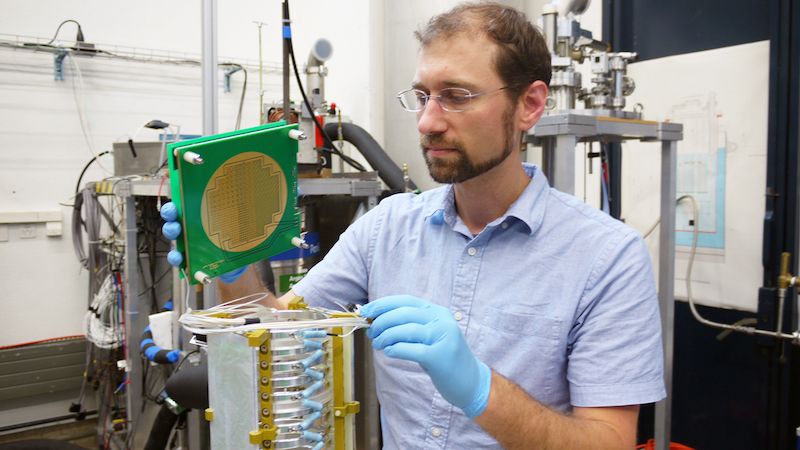 Daniel Dwyer is a particle physicist in the Physics Division who specializes in neutrino research. His award is for “Improving Neutrino Detection in DUNE With Pixel Sensors,” selected by the Office of High Energy Physics.
Daniel Dwyer is a particle physicist in the Physics Division who specializes in neutrino research. His award is for “Improving Neutrino Detection in DUNE With Pixel Sensors,” selected by the Office of High Energy Physics.
Dwyer’s project seeks answers about the masses of different states of neutrinos and about the behavior of neutrinos and antineutrinos. The project could enhance neutrino measurements at the Deep Underground Neutrino Experiment, or DUNE, which will produce a beam of neutrinos at Fermilab near Chicago – and possibly also at the Long-Baseline Neutrino Facility (LBNF) in South Dakota – by developing a new type of 3D readout system for the detectors, and developing related algorithms to help interpret the detector data. These techniques could also potentially aid in the hunt for the source of dark matter and prove useful for nuclear security applications.
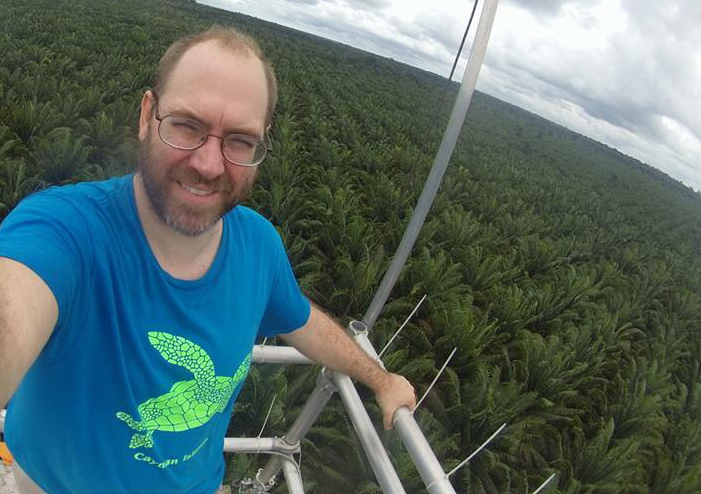 Kolby Jardine is a research scientist in the Climate & Ecosystem Sciences Division specializing in biochemical ecology. His award is for “O-Acetylation and Methylation Engineering of Plant Cell Walls for Enhanced Biofuel Production,” selected by the Office of Biological and Environmental Research.
Kolby Jardine is a research scientist in the Climate & Ecosystem Sciences Division specializing in biochemical ecology. His award is for “O-Acetylation and Methylation Engineering of Plant Cell Walls for Enhanced Biofuel Production,” selected by the Office of Biological and Environmental Research.
Jardine’s project seeks to understand and manipulate the metabolism of genetic modifications of plant cell walls, which will not only provide important knowledge on the physiology and ecology of plants but will also allow the generation of engineered bioenergy crops – such as the California poplar, an emerging biofuel tree species – for the sustainable production of biofuels and bioproducts.
 Colin Ophus is a research scientist at the Molecular Foundry, a DOE Office of Science User Facility. His award is for “Imaging Beyond the Shot Noise Limit With Quantum Electron Microscopy,” selected by the Office of Basic Energy Sciences.
Colin Ophus is a research scientist at the Molecular Foundry, a DOE Office of Science User Facility. His award is for “Imaging Beyond the Shot Noise Limit With Quantum Electron Microscopy,” selected by the Office of Basic Energy Sciences.
Ophus’ project seeks to produce instrument designs for Quantum Electron Microscopy (QEM) and to build a prototype instrument to prove the QEM concept. The development of future QEM instruments at DOE Nanoscale Science Research Centers will allow scientists to image more sensitive samples for biology and materials science research with higher resolution and clarity than ever before.
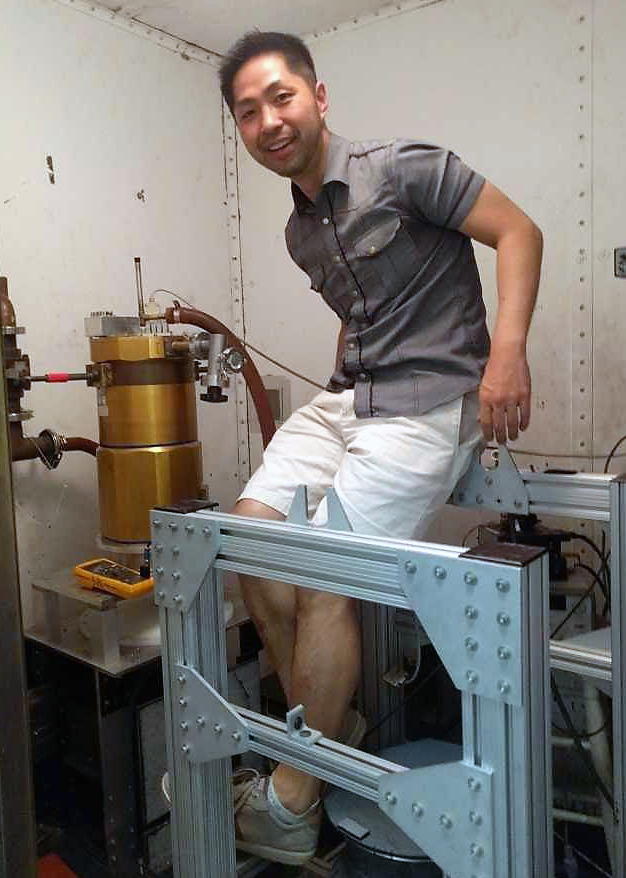 Aritoki Suzuki is a staff scientist in the Physics Division. His award is for the “Development Of High-Throughput Superconducting Microfabrication Processes for Future High Energy Physics Experiments,” selected by the Office of High Energy Physics.
Aritoki Suzuki is a staff scientist in the Physics Division. His award is for the “Development Of High-Throughput Superconducting Microfabrication Processes for Future High Energy Physics Experiments,” selected by the Office of High Energy Physics.
Suzuki’s project will support R&D for a new approach to manufacturing detectors for high-energy physics experiments. The project is intended to boost the manufacturing throughput for ultrasensitive, superconducting detectors and readout electronics components while improving quality control and lowering cost by exploring fabrication with commercial microfabrication foundries. The developed process could be used for astrophysics experiments such as those that seek to improve measurements of tiny fluctuations in the universe’s oldest light or that seek to find low-mass dark matter particles, and could also benefit quantum computing.
For more information on all the winners and the award, go here.
###
Lawrence Berkeley National Laboratory addresses the world’s most urgent scientific challenges by advancing sustainable energy, protecting human health, creating new materials, and revealing the origin and fate of the universe. Founded in 1931, Berkeley Lab’s scientific expertise has been recognized with 13 Nobel Prizes. The University of California manages Berkeley Lab for the U.S. Department of Energy’s Office of Science. For more, visit www.lbl.gov.
DOE’s Office of Science is the single largest supporter of basic research in the physical sciences in the United States, and is working to address some of the most pressing challenges of our time. For more information, please visit science.energy.gov.
